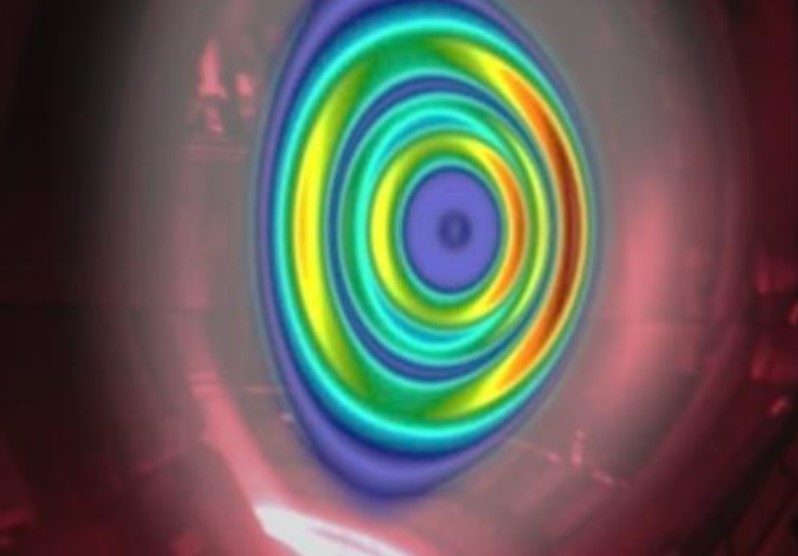D-T plasma in JET pulse #99896, shown alongside calculated zonal poloidal flows. / Plasma image by UKAEA; flow simulation by FAR3D code.
In 2021, during JET’s record-breaking campaign, researchers at EUROfusion conducted experiments using deuterium-tritium (DT) fuel and have recently compared them to control experiments with pure deuterium (DD). Their findings suggest that future fusion power plants using DT fuel could experience lower energy losses due to plasma instabilities than previously thought.
The experiments headed by Jeronimo Garcia (CEA-IRFM, France) and Yevgen Kazakov (LPP-ERM/KMS, Belgium), conducted under conditions similar to those in ITER, revealed that adding tritium improved core plasma conditions. They also observed a new beneficial state at the plasma’s edge, without the expected energy bursts. The study by Garcia and Kazakov has been published at Nature Communications (https://doi.org/10.1038/s41467-024-52182-z).
The result offer promising news for ITER and other magnetic confinement fusion reactors. Alberto Loarte, head of ITER’s Science Division, commented, “The study reveals better-than-expected performance in DT plasmas compared to DD. In particular, instabilities caused by fast particles in DT plasmas, such as the helium produced during fusion in ITER, could reduce energy losses and enhance fusion efficiency. These results suggest that if instabilities stay at low levels, they might actually improve performance, contrary to our previous assumptions. They also indicate that, in ITER’s conditions, we could replace disruptive plasma energy bursts (ELMs) with a continuous outflow that is easier for the reactor walls to handle.”
See the original story at EuroFusion here.

